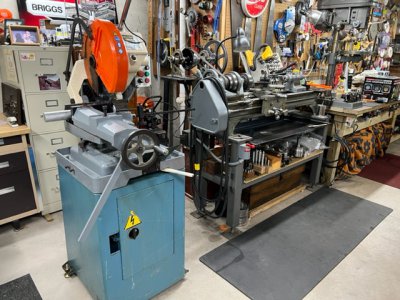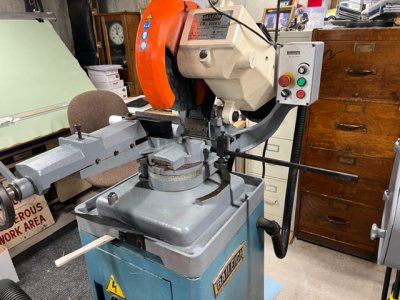- Joined
- Apr 14, 2014
- Messages
- 3,564
In theory that's a great idea. However, in this particular situation I would think it would at best be impractical, and quite possibly extend the cleanup time and effort far beyond the time it takes to vacuum up the chips. I have a cheap shop vac dedicated to this one machine. It took less than 3 minutes to vacuum up all the swarf on and around the machine.If you have a lot of cutting to do, use an air hose to clear between cuts. Same as on a mill when doing multiples with lots of part changes. Sweep or vacuum it all up at one time when you're done.
With the coolant flow set at the maximum I was splashing coolant and errant chips in a 2-foot diameter circle around the entire machine. With the coolant flow dialed in there's enough to keep the blade clean and cool, but not so much it's slopping all over the floor or causing the swarf to plug the drain path.
Here are a few pictures the machine in what I hope is going to be a temporary location. As you can see it's in close proximity to the desk, drawing board, and one of the lathes. It's fine where it is if I don't need to cut anything longer than about 30". Anything longer than that will run into the headstock of the Seneca Falls lathe. The longer-term plan is to move some of the bar and round stock and put the machine against the back wall of the shop near the hydraulic press. I say longer term in that there's no way I'll have the time or the energy to do it in the near future. At the earliest it'll be a wintertime job.



